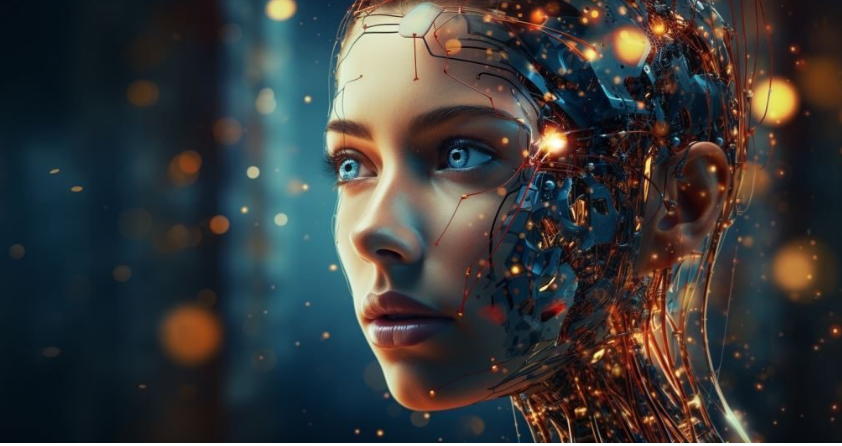
Introduction: The Engine of Counterfactuals
The question “What if?” is the cornerstone of both historical reflection and scientific inquiry. It drives historians to debate turning points, and scientists to model possible futures. For centuries, answering this question relied on expert intuition, linear extrapolation, and the limitations of human computation. Today, Artificial Intelligence has moved “What If” from a philosophical debate to a rigorous, data-driven simulation.
AI is no longer just predicting the next quarter’s sales or the weather tomorrow; it is creating sophisticated, internal models of reality—both past and present—and then altering a single variable to observe the resulting cascading changes. This is known as counterfactual analysis, and it allows researchers to test theories, understand causality, and quantify risk with unprecedented precision. Executing this level of complex, multi-stage, and data-intensive simulation requires highly advanced, integrated systems capable of managing vast data flows and intricate modeling techniques. For a deeper understanding of the integrated platforms that make this complex analysis possible, you can explore the technology at https://skywork.ai/. This article explores the mechanics behind AI’s ability to create these simulated realities and examines its transformative impact on both historical and scientific fields.
The Mechanics of Counterfactual Modeling
AI simulates hypothetical scenarios by following a three-step methodology that moves far beyond simple statistical correlation:
1. Building the Causal Baseline
Before running a “What If,” the AI must first accurately model the “What Is.” This involves training the system on historical data (in history) or physical laws and observational data (in science) to establish a comprehensive baseline. Crucially, modern AI employs Causal Inference Models—advanced algorithms designed not just to identify that A and B occurred together, but to determine that A caused B. Without understanding causality, the simulation will simply produce nonsense. The AI creates a map of dependencies: when a variable changes, the model knows precisely which other variables are directly or indirectly affected.
2. The Variable Intervention
This is the moment of the “What If.” The researcher introduces a single, specific variable intervention into the baseline model. This intervention must be precisely defined, such as: “What if the cost of solar energy dropped by 50% five years earlier?” or “What if penicillin had not been discovered until 1980?” The AI then uses this change as a new starting condition.
3. Dynamic Simulation and Emergent Behavior
The core of the simulation relies on Dynamic Modeling and Agent-Based Modeling (ABM). The AI doesn’t just calculate a new endpoint; it runs the model forward in time, step by step, observing how the system reorganizes itself. In an ABM, the AI simulates thousands or millions of individual components (e.g., individual cells in a biological study, or economic actors in a market). These agents follow simple rules, but their collective interaction, driven by the initial variable change, generates highly complex and often surprising emergent behavior. This simulation reveals the true ripple effects of the hypothetical change across the entire system.
Case Study 1: Rewriting History with AI
For historians, counterfactuals are intellectual exercises—the AI transforms them into rigorous tests of causality. The challenge in historical modeling is the data sparsity and subjective nature of inputs. AI helps overcome this by quantifying and correlating seemingly disparate events.
Consider a simulation: “What if the American Civil War had been postponed by a decade?”

The AI would adjust the historical timeline and then model the resultant effects across several domains:
- Economic Impact: How would the continuous, rapid industrialization of the North have increased its economic dominance over ten years? How would prolonged reliance on cotton exports have shifted global trade balances?
- Demographic & Social Shifts: How would another decade of fugitive slave laws and westward expansion have altered population distribution, migration patterns, and political radicalization?
- Political Structure: Would the admission of more Western states have altered the balance of power in the Senate, potentially leading to a negotiated compromise that avoided war, or would the delayed conflict have been even more devastating?
By simulating these effects, AI helps historians move beyond simple speculation. It can validate or disprove long-held theories about historical determinism versus the power of individual events, highlighting which factors (economic versus political) were the most sensitive to change.
Case Study 2: Quantifying Risk in Science and Engineering
In the sciences, AI simulations are even more rigorous because the underlying systems are often governed by predictable physical laws, even if their interactions are chaotic.
Climate and Environmental Modeling
AI is crucial for running complex climate counterfactuals. Researchers can ask: “What if the global community had achieved net-zero emissions by 2030 instead of 2050?” The AI simulates the long-term impact on global sea levels, regional extreme weather frequencies, and biodiversity loss. This moves beyond fear-mongering to provide policymakers with quantifiable data on the real cost of delay versus the benefit of rapid intervention.
Biomedical and Drug Discovery
In drug development, AI models can simulate the outcome of combining different chemical compounds or altering a protein’s folding structure. A key counterfactual question is: “What if we use compound X, which is known to cause mild liver toxicity, in combination with drug Y?” The AI can simulate the complex molecular interactions within a human body model, predicting the probability and severity of adverse effects before the drug ever enters clinical trials. This dramatically accelerates discovery and enhances patient safety by testing thousands of theoretical drug formulations in a safe, simulated environment.
The Human Role: Defining the Possibility Space
While AI is a revolutionary simulation engine, it is not a crystal ball. Its predictions are not certainties; they are representations of the highest-probability path within the data provided. The limitations of AI in this field are rooted in two primary concepts:
- The Butterfly Effect: In chaotic systems like the weather or the global economy, a tiny change in the initial condition can lead to radically different outcomes (the butterfly effect). AI captures this divergence, often generating a wide array of plausible scenarios rather than a single answer. The human strategist must interpret this possibility space, not just the average outcome.
- Emergent Novelty: AI can model historical and scientific trends, but it cannot predict true novelty—a new scientific law, a sudden cultural movement, or the invention of a technology that fundamentally breaks existing assumptions (like the discovery of the internet). These emergent events are by definition outside the AI’s training data.
The human role in the “What If” simulation is therefore one of critical judgment and ethical oversight. We define the scenario, we select the intervention, and we apply our wisdom to interpret the AI’s complex outputs, ensuring the simulation serves to illuminate risk and guide strategy, rather than dictate destiny.
Conclusion
AI’s ability to simulate hypothetical scenarios fundamentally changes the way we learn from the past and plan for the future. It moves the discussion from subjective speculation to quantified possibility, empowering historians, scientists, and business leaders to test ideas in a digital sandbox before facing the consequences in the real world. By mastering the art of framing the counterfactual query and interpreting the resulting spectrum of probabilities, we can leverage AI not to predict a certain future, but to better prepare for all the ones that might emerge.















